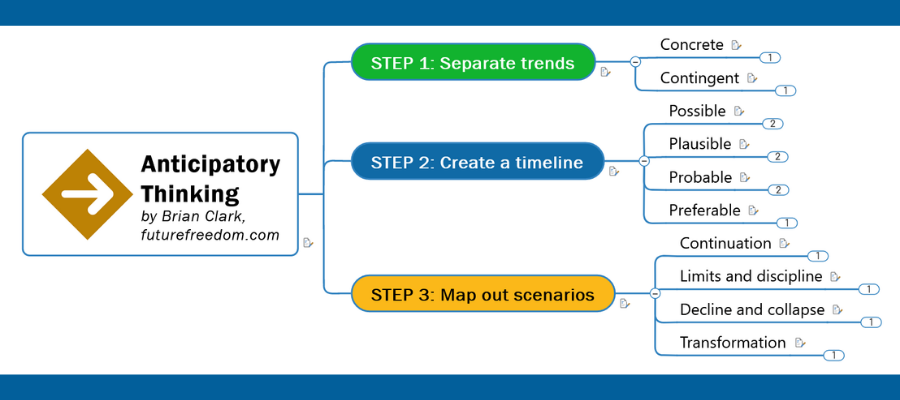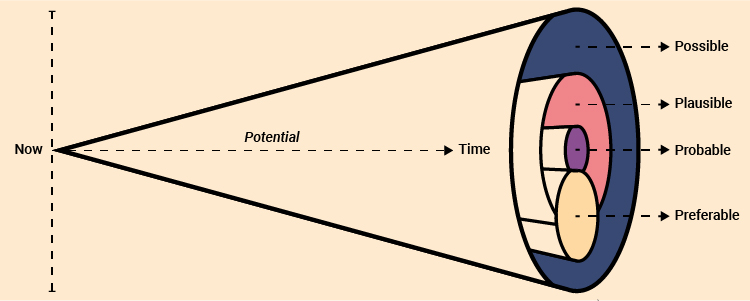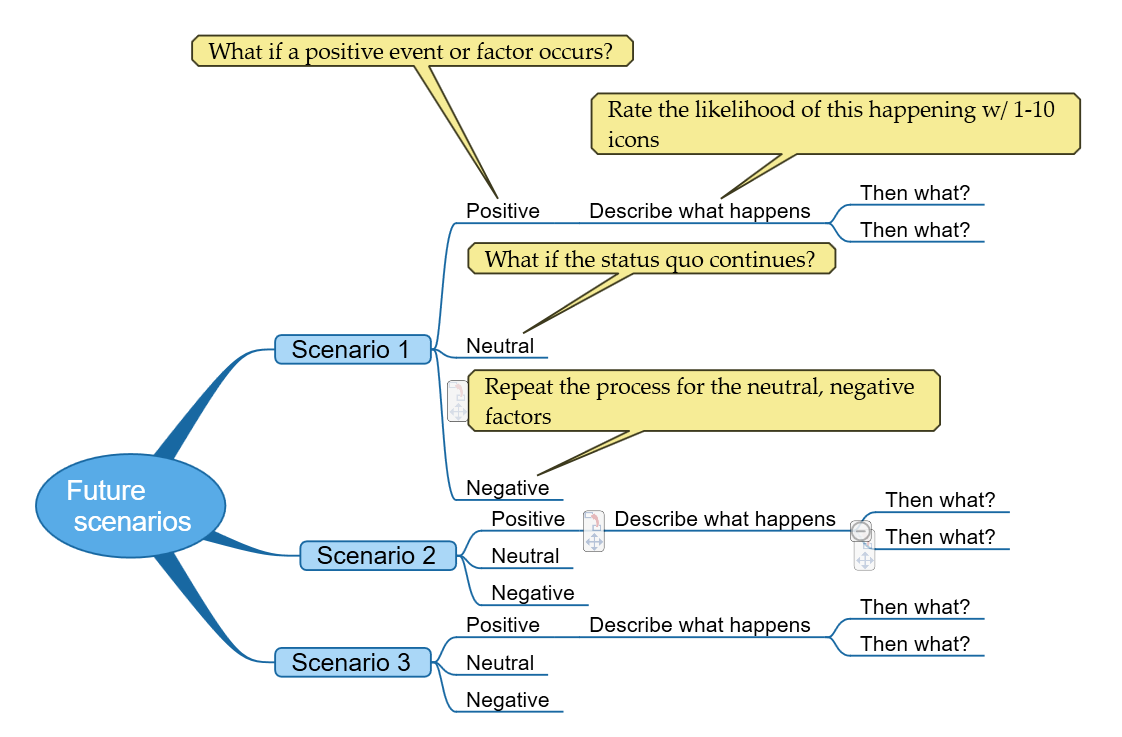
What if you could see coming disruptions before they impacted your career? What if you could predict problems people will have and help them succeed? What if you could spot new business opportunities with greater certainty?
That’s the promise of anticipatory thinking, a mindset that blogging expert Brian Clark (founder of CopyBlogger, Rainmaker Digital and many other successful online ventures) describes in a 5-part email series called Future Freedom.
A common thread about my writing on this blog is arming you with the tools, mindset and techniques to help you connect the dots, uncover new opportunities and anticipate the future.
Occasionally, I come across a point of view that is so compelling that I must share it with you. Anticipatory thinking is one of those frameworks. In Clark’s article, he lays out a process to anticipate and leverage the future with exceptional clarity. It’s so compelling that I created a mind map template so you can use it to accelerate your thinking and planning.
As Clark describes it, anticipatory thinking has three steps:
- Separating concrete and contingent trends,
- Create a timeline, and
- Map out scenarios.
Here’s a high-level overview of each step:
Step 1: Separating concrete and contingent trends
Concrete trends are those things that are already happening and will continue to happen. Contingent trends, on the other hand, may or may not happen, depending upon human behavior and other factors. It’s often hard to determine if or when a contingent trend is going to grow into something significant. In most cases, contingent trends don’t represent good business opportunities.
Step 2: Create a timeline
“To effectively anticipate how the future will play out, it helps to segment the opportunities you’re interested in across a spectrum of time,” Clark explains. This is important for two reasons: First, if you jump on an emerging opportunity too quickly, your efforts may flame out because you were too far ahead of your target audience’s current mindset. Also, the farther in the future a contingent trend is, the less certain it is.
To help you better evaluate the timing of the potential opportunities you’ve uncovered, Clark presents a mental model called the Futures Cone. It helps you visualize possible, plausible, probable and preferable future outcomes.
Possible: These are things that could happen at some undetermined time in the future, depending upon technological or societal trends. They are too far away and too amorphous to be considered opportunities.
Plausible: These outcomes are a bit more certain than what’s possible, but they’re still largely conjecture.
Probable: “These are things that are likely to happen, and fairly soon. This is the category to focus on when contemplating a new business, product, or service,” Clark advises.
Preferable: This is the way you’d like the near future to turn out.
Step 3: Map out scenarios
Scenarios are a powerful way to consider multiple possible futures. They are stories we construct that help us to visualize the potential events that MAY occur if certain conditions come true. They’re an excellent way to prepare our minds so that they’re better able to recognize the signs when one of the “future stories” we’ve imagined comes to pass.
Clark presents a simple process called the Four Futures Framework to help you construct meaningful scenarios. They are:
Continuation: Things continue much as they are, leading to growth and stability.
Limits and discipline: Adaptive behavior is required to survive and thrive.
Decline and collapse: The way things have been falls apart, leading to chaos.
Transformation: A significant paradigm shift transcends the status quo.
Another way to mind map scenarios is to consider each path in terms of its impacts. What if this new development caused a positive change? A negative one? Or resulted in no change (the status quo continues)? A mind map gives you a powerful canvas to explore the implications of each future path, as illustrated by the mind map below:
A game-changing way of thinking about the future

I’ll let you read Clark’s article for all the details, but I believe this way of thinking through future opportunities is a game-changer.
Why? Here’s my take on it:
The future is amorphous and hard to define. As it unfolds, it could follow any one of multiple future paths. Trying to anticipate it is quite challenging. But it becomes much easier if you visualize it. Mind mapping is a powerful way to think through future trends and the opportunities they may create.
If you’re trying to build a new business around an emerging trend, you need a better way to reduce risk and increase your odds of success. Having a way to visually think through these possibilities makes it much more likely that you’ll be able to recognize them and capitalize on them when and if they occur. That gives you a huge advantage over the majority of people, who simply react to events as they happen.
As we’ve seen during the last year and a half with the global pandemic, change is coming at us faster and more unpredictably than ever. That’s not about to change. Disruptions will become more and more common.
That means you need a better way to think about the future and what you want to accomplish. Clark’s 3-step process gives you a roadmap to plot out how you will anticipate and plan for whatever comes next.
Get your visual framework for success
As I indicated earlier in this article, I was so impressed with Clark’s practical yet profound way of identifying and capitalizing on future opportunities that I created a mind map template that you can use to apply it to your life.
By filling out the form below, you’ll get access to an interactive map with extensive notes on each step of this process. It is a read-only representation of the full template. It contains a link to download the template in the MindManager .mmap format. Most mind mapping software can import it. You’ll need that template in order to add your ideas to it.
Good luck exploring your future opportunities!



Leave a Reply